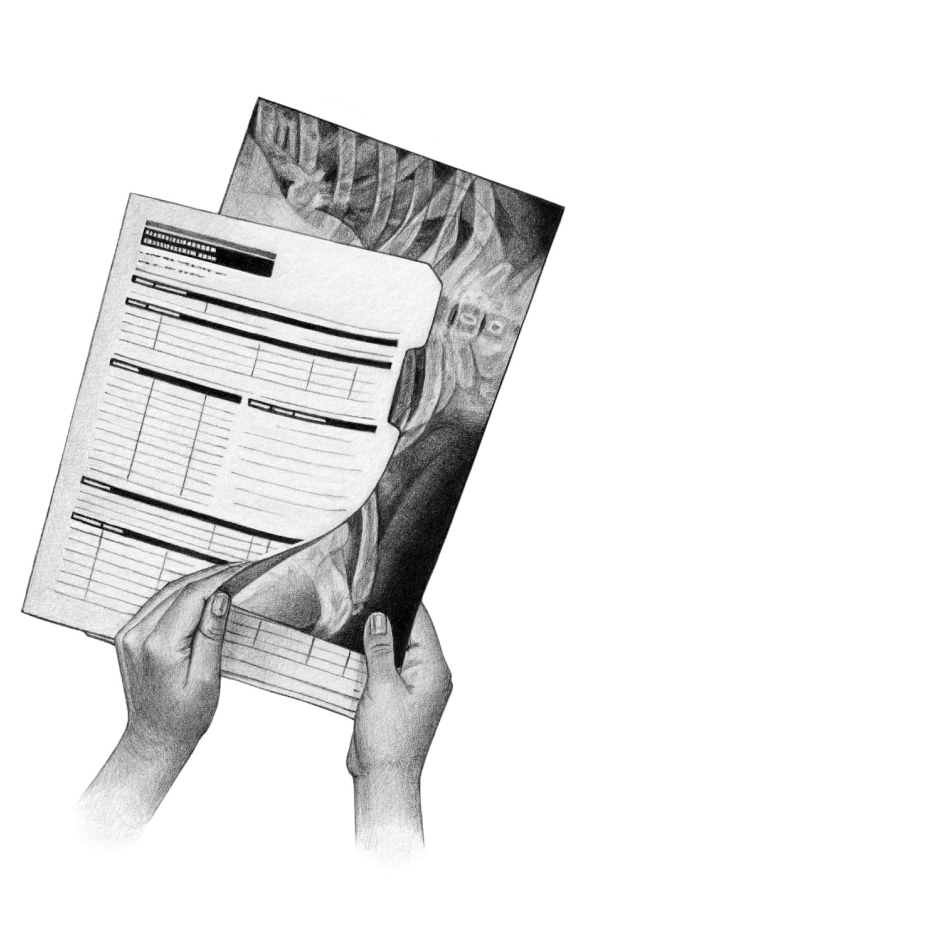How to Fill Out the Adult Disability Report (Form SSA-3368)

Atticus offers free, high-quality disability advice for Americans who can't work. Our team of Stanford and Harvard-trained lawyers has a combined 15+ years of legal experience and has helped over 50,000 Americans apply for disability benefits.
If you’re applying for Social Security Disability Insurance (SSDI) or Supplemental Security Income (SSI), you must complete the Adult Disability Report (Form SSA-3368-BK) as part of the application process. Form SSA-3368 includes questions about your medical condition and work history.
Fair warning: The Adult Disability Report is 15 pages long and takes about 90 minutes to complete. Read on to know what to expect and how to complete it successfully.
What is Form SSA-3368?
The Adult Disability Report (Form SSA-3368) is a document that informs the Social Security Administration about a disability applicant’s condition and inability to work. Form SSA-3368 outlines important details about the applicant’s disability, limitations, and work history. It also summarizes medical history and includes contact details for healthcare providers.
The Social Security Administration and Disability Determinations Services use the information on Form SSA-3368 to determine an applicant’s technical eligibility and medical eligibility for benefits.
Who needs to fill out the Adult Disability Report?
The Adult Disability Report is a required form for individuals applying for Social Security disability benefits. The only exception is minors, who use the Child Disability Report (Form SSA-3820) to apply for Supplemental Security Income (SSI).
If you apply for benefits online, you’ll complete the form and questions yourself. If you file in person at your local SSA office, an SSA claims representative can help walk you through the questions.
6 Tips for filling out Form SSA-3368
Before filling out the form, consider the following tips for success:
1. Review your disability application materials
Form SSA-3368 features questions about your work history, your conditions, and how they affect you. The Work History Report, Function Report, and main application form already cover those topics, in much greater detail.
To ensure your application is consistent, you can use your answers from those forms as a guide. It is important to build a credible and clear case.
2. Gather your healthcare providers’ contact details
You’ll need to share the contact information of your healthcare providers and medical professionals who’ve been involved in treating, diagnosing, or managing your condition.
The SSA will contact these providers to request your medical records and to learn more about your disability from a third-party source. Take the time to make sure all this information is accurate and complete. Any incomplete or incorrect contact details will slow down — or completely halt — your application.
3. Focus on your inability to work
Your responses to questions should focus on how your medical condition impacts your ability to carry out work responsibilities, not how your limitations impact your personal or social life. The SSA’s job is to assess if you’re physically capable of working.
4. Fill in every section
It is essential to fill out every section of the Adult Disability Report. Leaving answers blank can delay your application or lead to a rejection outright. If your form is missing information, the SSA or DDS might request the information, in which case you’ll have 10 days to respond. You also might receive a denial and have to restart the application process.
You’ll be instructed to skip some parts of Form SSA-3368 if they don’t apply to you. But in those instances, directions will be very clear. You generally need to check a box indicating that you intentionally followed the instructions, rather than simply forgetting to fill a question out.
5. Give specific examples of your limitations
Include concrete examples in your responses. If you don’t give a clear explanation for your limitations, the SSA will assume you did the most demanding version of the activity.
If a question asks you about your work capabilities, be specific about your limitations. Instead of saying “I had to quit because my arthritis worsened,” give an example: “I had to quit because my joint pain was too severe to use a pen or operate the cash register.”
6. Use the “Remarks” section for additional information.
You might need more than the allotted space for answers. Section 11 in the Adult Disability Form, labeled “Remarks,” is for any information you are unable to fit in previous sections.

How to fill out Form SSA-3368 section-by-section
Download the latest version of Form SSA-3368 from the SSA's website, or get a copy at your local SSA office. Before filling out the form, check out this overview of each section so you know what to expect:
Section 1 - Applicant contact information
Start the form by sharing your contact and communication details, including your name, address, phone number, and preferred language.
Section 2 - Secondary contact information
In this section, list contact details for someone else who’s familiar with your disability (other than your doctors). If your application includes the Third-Party Function Report, the same person who completed that would be a natural choice to use here.
If someone other than you or this second person is completing this form, you’ll list their contact information here, too.
Section 3 - Medical conditions
List the conditions that contribute to your disability. This section also includes basic physical questions about your height, weight, and shoe size. For consistency, list the same conditions as your main application form.
Be sure to only include disabilities and health conditions that affect your ability to work and conditions diagnosed by a doctor for which you’re actively receiving treatment.
Section 4 - Work activity
Questions in this section cover your current work situation and how your condition affects your ability to work. Depending on your situation, you may not need to answer every question in this section. It's marked which questions will apply to you.
Section 4 questions correspond closely to Question 5 in the Function Report, and Question 19 in the main application form. Keep your answers as similar as possible to what you’ve already shared there.
Section 5 - Education and training
In addition to outlining your education and career training, you’ll answer simple questions about your language, reading, and writing abilities.
Section 6 - Job history
In this section, you can list up to five jobs that you held in the last 15 years before you became unable to work. If you held only one job during that period, you’ll answer follow-up questions about your job responsibilities for that role. If you have not worked in the past 15 years, check the appropriate box and skip ahead to the next section.
Your answers must be consistent across every form you submit, so it can be helpful to re-use the answers you’ve already shared elsewhere in the application. Job history information is part of the Work History Report and Questions 16 and 17 on the main application form.
Section 7 - Medicines
List all the prescription and non-prescription medications you take to manage your condition. You’ll also need to list the reason for taking each medication and the name of the prescribing doctor, if applicable.
Only list medicines relevant to the conditions for which you’re applying. For example, if you need disability benefits because you have migraines and joint pain, do not list your diabetes medication.
An example of a prescription medication is Valium or Metformin, and a non-prescription medication might be an over-the-counter painkiller, like Advil. You can also include vitamins and supplements if part of your prescribed treatment plan.
This section corresponds to Question 22 of the Function Report. Before filling out this section, it can be helpful to gather your medication containers to ensure the information you’re entering is accurate.
Section 8 - Medical treatment
In the following section, you will list other treatments you’re receiving or are scheduled to receive in the future.
You will also provide contact information for up to five healthcare providers who have either treated you in the past or are scheduled to do so in the future. In addition, you’ll share your treatment history with these providers.
For this section, you’ll need to list any outpatient appointments, emergency room visits, and hospital stays. Provide details for each, including the related condition and treatment. There’s also a checkbox list for medical tests.
Section 9 - Other medical information
Here, you will list any professionals or organizations with knowledge of your medical history. This might include a social worker assigned to your case or an insurance agency who approved a claim related to your condition.
Section 10 - Vocational rehabilitation, employment, or other support services
This section is only for applicants already receiving Supplementary Security Income (SSI). If you are an SSI recipient and have participated in any programs designed to help you return to work, such as skills training or job search assistance, you’ll include the program details here.
Section 11 - Remarks
This final section is for any information throughout the form you were unable to fit in the allotted answer space. This section allows you to include all the details the form requests. However, it is important to include only the information explicitly asked for by the SSA.
Get help applying for Social Security disability
Applying for disability benefits is a complex process. A qualified disability lawyer can help ease the application process and improve your chances of winning benefits by three times.
Take our 2-minute disability quiz, and an Atticus team member will reach out for more information about your case and offer advice. If you’d like, we can match you with a disability attorney. There are no upfront costs to working with a lawyer — you only pay a fee after you win benefits.
Related resources:
How to Fill Out the Social Security Function Report (Form SSA-3373)
How to Fill out the Social Security Work History Report (Form SSA-3369)

Jackie Jakab
Lead Attorney
For Clients
Fields of Law
For Lawyers
At the bottom of many websites, you'll find a small disclaimer: "We are not a law firm and are not qualified to give legal advice." If you see this, run the other way. These people can't help you: they're prohibited by law from giving meaningful advice, recommending specific lawyers, or even telling you whether you need a lawyer at all.
There’s no disclaimer here: Atticus is a law firm, and we are qualified to give legal advice. We can answer your most pressing questions, make clear recommendations, and search far and wide to find the right lawyer for you.
Two important things to note: If we give you legal advice, it will be through a lawyer on our staff communicating with you directly. (Don't make important decisions about your case based solely on this or any other website.) And if we take you on as a client, it will be through a document you sign. (No attorney-client relationship arises from using this site or calling us.)
- © 2026 Atticus Law, P.C.
Terms | Privacy | California Privacy | CHD Policy | Disclaimer | This website is lawyer advertising.